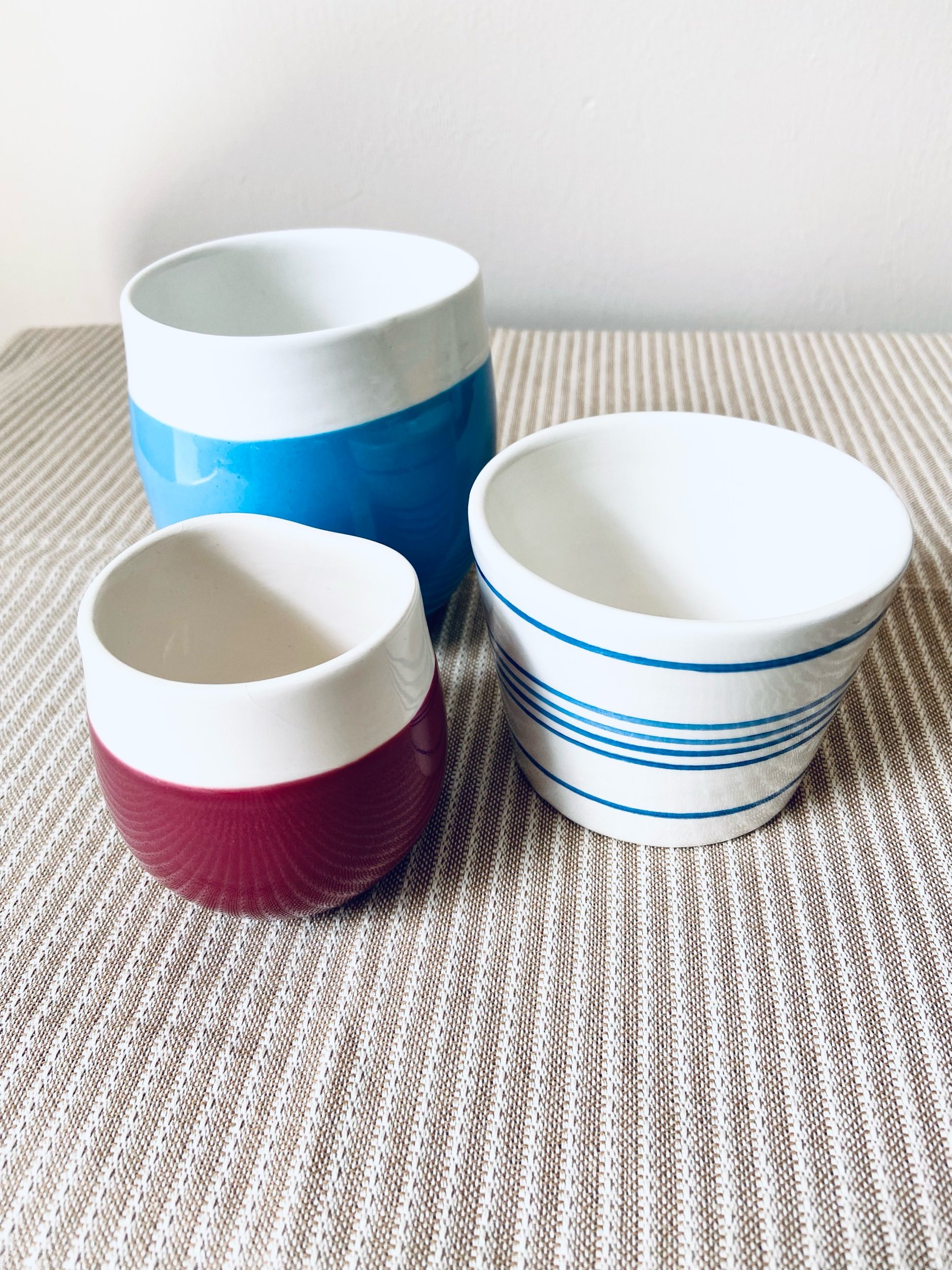Hazel is: Black Cherry
You’re lounging at the poolside of turquoise blue waters, sipping a zesty tangerine San Pellegrino, and nibbling on juicy black cherries. Alternatively, you’re stuck in rush hour traffic with your kid’s aqua blue Crest sparkle fun toothpaste stained on your fave tee, a line of “Big Cheeses” dropping kids off at the nearby school, and the obnoxious stop-and-go driver in front of you whose busted brake light is a dimmed dark red. I prefer the first scenario. Either way, the color palette equals the perfect mix of a triadic color harmony of tertiaries: blue-green, yellow-orange, and red-violet. Triadic = triangle of three colors on the color wheel; tertiaries = the “in-between” colors that are a mix of primary (blue, yellow, red) and secondary colors (green, orange, violet).
Just this week, I hung out at the cookbook section of a local bookstore in Naples, FL and snapped the below photo simply for my own inspirational reference of Tunisian (and other North African) recipes that I may try. I could also use some recipes as content for future posts or to make and serve at upcoming Hazel Coasts cultural workshops and events. Only later when drafting this post did I notice that the photo happened to nail the above mentioned color harmony. As I scrolled through the cookbook itself, I was enamored by all the culinary artwork that was saturated with beet red hues. Chocolate-covered Dates, Pomegranate Seeds with Tangerine Juice and Rose Water, Festive Lamb Couscous with Nuts and Raisins. I found myself dreaming about all the tabletop decor and cuisine possibilities stemming around the color I like to call Black Cherry.
When was the last time someone told you, “this meal is too pretty to eat?” A tabletop place setting and the menu can completely evolve into an eye opening work of art with a few simple elements. To create that wow factor, first consider the color palette and mood or theme you want. Layer a canvas of color and texture with a handwoven tablecloth and/or placemats (check out our foutas and rush tabletop decor here). The dinnerware, glassware, and silverware are key in style and color consideration as well. When in doubt, you can almost never go wrong with clean white dinnerware. All colors of food pop beautifully with a white border, just as a white mat in a picture frame does for a photo and as white crown molding does for a colorfully painted wall. Ambient lighting and music selection all chime in on the atmosphere. Perhaps the focal point is the food itself. If you’re going for a deep burgundy (i.e. black cherry) theme in food colors, for instance, you could build an entire meal around the above mentioned North African recipes. A neutral taupe fouta tablecloth, ceramic dinnerware in Mediterranean cobalt, aqua blue, and white, topped with yellow-orange curried couscous and mouthwatering red-violet ingredients would nail the triadic color harmony. Curious to try out one of the referenced recipes? This one is quick and easy, but bursting with deliciousness. As you can see from the cover photo of this post, I made it and it passed my six year old’s and my “yummy” taste test. For his portion, I added a bit more icing to offset the tartness.
Pomegranate Seeds with Tangerine Juice and Rose Water
ALGERIA, LIBYA, MOROCCO, TUNISIA PREPARATION TIME: 15 minutes, plus chilling time
SERVES: 4-6
When pomegranates are in season in October, a bowl of seeds moistened with rose (or orange blossom) water is one of the most common desserts on the table of many homes in North Africa, especially in Tunisia and Libya. Sometimes, as it is also the season for citruses, the juice of tangerines, clementines or an orange is added, too. While some use a heavy hand with rose water or orange blossom water, the unaccustomed should be more prudent.
2 ripe pomegranates
2 tangerines or clementines or ½ orange
½ lemon
dash of rose water or orange blossom water
1-2 teaspoons icing (confectioners) sugar, optional
Seed the pomegranates and remove any pieces of white pith. Put into a large bowl. Juice the tangerines and lemon, add the rose water and icing (confectioners') sugar (if using) and toss to blend.
Cover with cling film (plastic wrap) and refrigerate for at least 30 minutes to chill and allow the flavours to meld. Toss again, spoon into individual bowls and serve.




